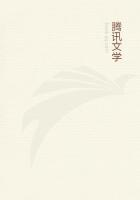The river Remni flows towards the sea from the mountains of Brecheinoc, having passed the castle and bridge of Remni. From the same range of mountains springs the Taf, which pursues its course to the episcopal see of Landaf (to which it gives its name), and falls into the sea below the castle of Caerdyf. The river Avon rushes impetuously from the mountains of Glamorgan, between the celebrated Cistercian monasteries of Margan and Neth; and the river Neth, descending from the mountains of Brecheinoc, unites itself with the sea, at no great distance from the castle of Neth; each of these rivers forming a long tract of dangerous quicksands. From the same mountains of Brecheinoc the river Tawe flows down to Abertawe, called in English Swainsey. The Lochor joins the sea near the castle of the same name; and the Wendraeth has its confluence near Cydweli. The Tywy, another noble river, rises in the Ellennith mountains, and separating the Cantref Mawr from the Cantref Bachan, passes by the castle of Llanymddyfri, and the royal palace and castle of Dinevor, strongly situated in the deep recesses of its woods, by the noble castle of Caermarddin, where Merlin was found, and from whom the city received its name, and runs into the sea near the castle of Lhanstephan. The river Taf rises in the Presseleu mountains, not far from the monastery of Whitland, and passing by the castle of St. Clare, falls into the sea near Abercorran and Talacharn. From the same mountains flow the rivers Cleddeu, encompassing the province of Daugleddeu, and giving it their name one passes by the castle of Lahaden, and the other by Haverford, to the sea; and in the British language they bear the name of Daugleddeu, or two swords.
The noble river Teivi springs from the Ellennith mountains, in the upper part of the Cantref Mawr and Caerdigan, not far from the pastures and excellent monastery of Stratflur, forming a boundary between Demetia and Caerdigan down to the Irish channel; this is the only river in Wales that produces beavers, an account of which is given in our Itinerary; and also exceeds every other river in the abundance and delicacy of its salmon. But as this book may fall into the hands of many persons who will not meet with the other, I have thought it right here to insert many curious and particular qualities relating to the nature of these animals, how they convey their materials from the woods to the river, with what skill they employ these materials in constructing places of safety in the middle of the stream, how artfully they defend themselves against the attack of the hunters on the eastern and how on the western side; the singularity of their tails, which partake more of the nature of fish than flesh. For further particulars see the Itinerary. (12)
From the same mountains issues the Ystuyth, and flowing through the upper parts of Penwedic, in Cardiganshire, falls into the sea near the castle of Aberystuyth. From the snowy mountains of Eryri flows the noble river Devi, (13) dividing for a great distance North and South Wales; and from the same mountains also the large river Maw, (14) forming by its course the greater and smaller tract of sands called the Traeth Mawr and the Traeth Bachan. The Dissennith also, and the Arthro, flow through Merionethshire and the land of Conan.
The Conwy, springing from the northern side of the Eryri mountains, unites its waters with the sea under the noble castle of Deganwy.
The Cloyd rises from another side of the same mountain, and passes by the castle of Ruthlan to the sea. The Doverdwy, called by the English Dee, draws its source from the lake of Penmelesmere, and runs through Chester, leaving the wood of Coleshulle, Basinwerk, and a rich vein of silver in its neighbourhood, far to the right, and by the influx of the sea forming a very dangerous quicksand; thus the Dee makes the northern, and the river Wye the southern boundary of Wales.















